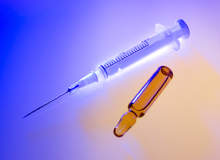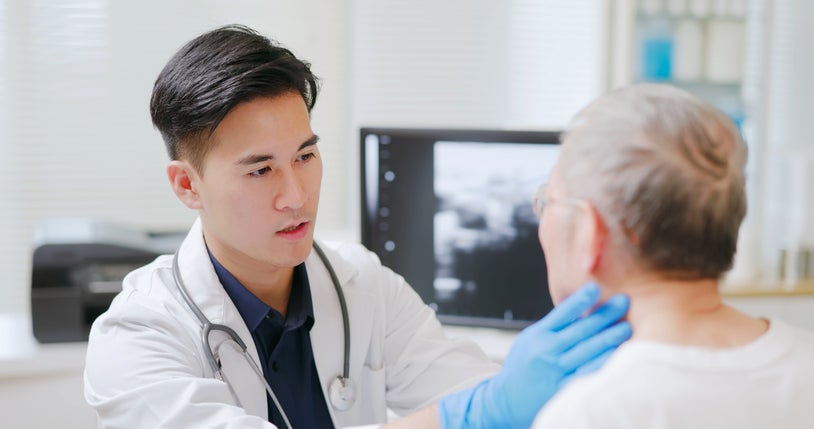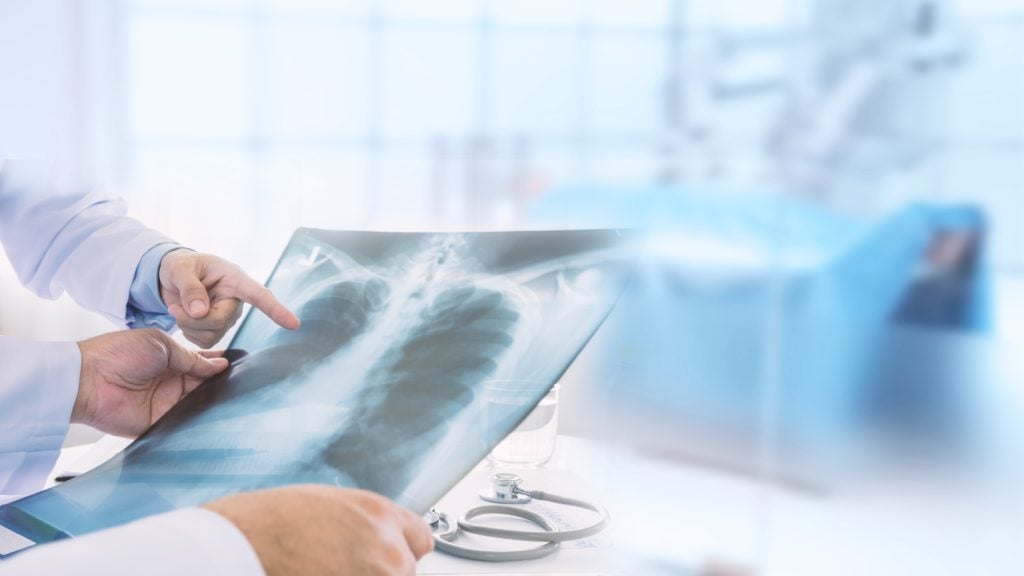
Many of the common plastics used today in the field of healthcare have only become freely available in the past 60 years. During this same period, numerous advances were achieved in the treatment of disease and in the development of surgical procedures; this is not an insignificant coincidence.
The availability of thermoplastic materials at such a pivotal time for medicine and pharmaceuticals meant that their properties could be exploited, gradually paving the way for the adoption of innovations such as patient packs, single use/disposability, tamper evidence and child resistance. Before the advent of these new materials, things were quite different.
Syringes were likely to have been made from glass, and in addition to being breakable, they were often reused, which necessitated sterilisation between each use. Tablets were likely to be packaged in either paper or cardboard.
Although generally consistent with the needs of the time, shelf lives were often limited, with an increased risk of accidental contamination, drying or moisture attack and oxidation under unfavourable storage conditions.
While the level of protection was quite high, individual units were heavy and abuse resistance was poor.
Since then, many things have changed. The use of plastics has created new design opportunities, such as the single-use approach, which reduces the risk of cross-contamination and nosocomial infections and makes treatment available to a broader social stratum.
How well do you really know your competitors?
Access the most comprehensive Company Profiles on the market, powered by GlobalData. Save hours of research. Gain competitive edge.

Thank you!
Your download email will arrive shortly
Not ready to buy yet? Download a free sample
We are confident about the unique quality of our Company Profiles. However, we want you to make the most beneficial decision for your business, so we offer a free sample that you can download by submitting the below form
By GlobalDataA vast number of different thermoplastic materials have been reported as being used in the various healthcare applications, but in practice approximately 90% of the total may comprise just four principal groups: polyolefins, PVC, styrenics (polystyrene, ABS, styrene acrylonitrile) and amorphous PET (A-PET). The use of these four types of plastics is rapidly growing in healthcare, due to a combination of attributes:
- their particular balance of physical properties
- their compliance with medical and environmental regulations
- the ease with which they can be converted
- their price and availability
- the increasing age profile of patients in certain parts of the world
- a general and continuing improvement in health awareness
- an increasing use of home healthcare, as distinct from the more formalised care received in hospitals which requires products that are safer and easier to use
- increase in single use, disposable items for health and safety reasons.
Polyolefins dominate
Collectively, more polyolefins are used for the production of medical devices and pharmaceutical packaging than any other thermoplastic material. Furthermore, they are increasingly being selected by customers for both the replacement of other thermoplastics and for the replacement of traditional materials such as glass, paper, metal and cardboard – a combination that makes them the fastest-growing family of polymers in the world.
LyondellBasell, a leading polyolefins producer, estimates that approximately a quarter of the disposable devices and a third of the non-disposable types are produced using polypropylene (PP). Polyethylene (PE) accounts for approximately a tenth of disposables, a slightly larger amount of non-disposables, and substantial amounts of pharmaceutical packaging, particularly film.
Within these headline applications, high-density PE is used in the production of items such as closures, rigid bottles and ampoules, needle sheaths, plunger rods for single-use syringes, mouldings to house diagnostic equipment and collapsible tube shoulders. In comparison, the applications for low-density PE include items such as squeezable bottles and ampoules, blow-fill-seal products, collapsible tube bodies, and film for primary and secondary medical and pharmaceutical packaging.
PP is used in an exceptionally wide range of applications, the most important of which is disposable syringes. Other applications in which its use has been reported are actuator bodies, specimen cups, mouldings to house diagnostic equipment, centrifuge tubes, multi-well micro-titration plates, trays, pipettes, caps and closures, IV bags and many others.
Polyolefins offer excellent aesthetic characteristics (clarity and gloss), superb organoleptic properties (low taste and odour), inertia to most chemicals and a full range of stiffness and abuse-resistant (even at low temperatures) characteristics. PE used in healthcare applications may be readily converted by:
- extrusion blow moulding
- blow-fill-seal moulding
- injection and injection stretch blow moulding
- extrusion into film
- injection moulding.
In comparison, PP is particularly suited to conversion by injection moulding, but may also be converted by blow moulding processes, together with blown and cast film processes.
Beyond technical versatility
These intrinsically positive properties are a basis for the use of PP and PE in healthcare applications. Nevertheless, by themselves they are not sufficient for choosing the best suited material. Due to the complexity and tediousness of the approval processes (including, for example, expensive toxicological studies), pre-testing of material, pharmacopoeia compliance certificates, security of supply and consistency of formulation are necessary preconditions.
There are polyolefins that have been specially developed to accommodate these requirements. They are compliant with European or US pharmacopoeia regulations and Drug Master Files are filed with the US Food and Drug Administration. If a manufacturer selects such a certified material, this normally leads to simplified approval processes.
Manufacturers of raw materials are not responsible for ensuring compliance with any additional materials that might be included with the raw material during its conversion into the finished component – for example, pigments and colours. These additional materials must nonetheless still comply with the applicable medical regulations, but in this case the assurance would normally come from their manufacturer or supplier.
Furthermore, the resultant composite material must comply with the applicable medical regulations and so the converter and/or the end user must be fully cogniscent of all of the individual component parts. These pharmacopoeia directives actually form part of the wider regulations applicable to finished healthcare components.
In addition to being concerned with the raw materials, these wider regulations demand that those responsible for bringing a healthcare component to the market must ensure that it is safe and that it does precisely what it is intended to do.
Sterilisability – a key requirement
There is one particular performance requirement that is shared by many healthcare applications – the need for effective sterilisation. The procedures used for sterilisation essentially involve exposure to heat, chemicals, radiation or combinations thereof. Needless to say, the polyolefin must be selected so that the effect of sterilisation of the final part is minimised.
A number of different conversion processes are used for the production of medical components and the response of any single candidate raw material to the conditions encountered can vary from that of others.
Therefore, in practice it is important to establish the appropriate balance between the requisite processing conditions on the one hand, and the inherent conversion performance of the selected raw material on the other.
Fulfilment of regulatory requirements
When all requirements have been shown to be fully satisfied, the manufacturer of the component can state that it conforms to the requirements established by the principal regulatory bodies (in Europe to MDD 93/42 EC, and in the US to 21 U.S.C. S301 et seq.), and that it has been manufactured from raw materials that comply with the requirements established by the major international pharmacopoeias (Ph. Eur. and USP) and the major international food contact legislators.
Consider ecological aspects
It almost goes without saying that the estimation of the costs of conversion should be taken with the greatest of care – not only after due consultation with the appropriate financial experts, but with a full and proper understanding of all of the parts of the production process.
Furthermore, improvements in converting technologies, and the potential for enhanced productivity and lower conversion costs, must be considered. In a similar manner, it is essential that the raw material, together with the healthcare component produced from it, does not place an unacceptable burden on the environment.
All components, including those destined for use in healthcare applications, should be carefully designed to avoid placing an unacceptable burden on the environment. The continuing quest to produce components more efficiently and to improve their performance during conversion and during end use has largely been achieved from improvements in conversion technology coupled with the availability of advanced resin types.
These improvements can also bring an environmental benefit, in so far as equivalent performance can often continue to be achieved with optimal energy use and reduced quantities of raw material. Furthermore, legislative requirements dictate that the use of materials potentially harmful to health or the environment during the lifecycle of the component should be minimised. Lifecycle benefits of polyolefins include:
- low energy consumption during production and use
- high yields and excellent energy efficiency
- low resource intensity – high efficient material utilisation
- low environmental impact – emissions to air, discharges to water and solid waste generation
- inherently low weight, providing transportation benefits
- source reduction/waste prevention.
These factors, which drive the polymer industry towards the overall goal of resource optimisation, are increasingly influencing the selection of candidate grades. Finally and equally importantly, environmental imperatives inevitably favour candidate materials such as polyolefins.







